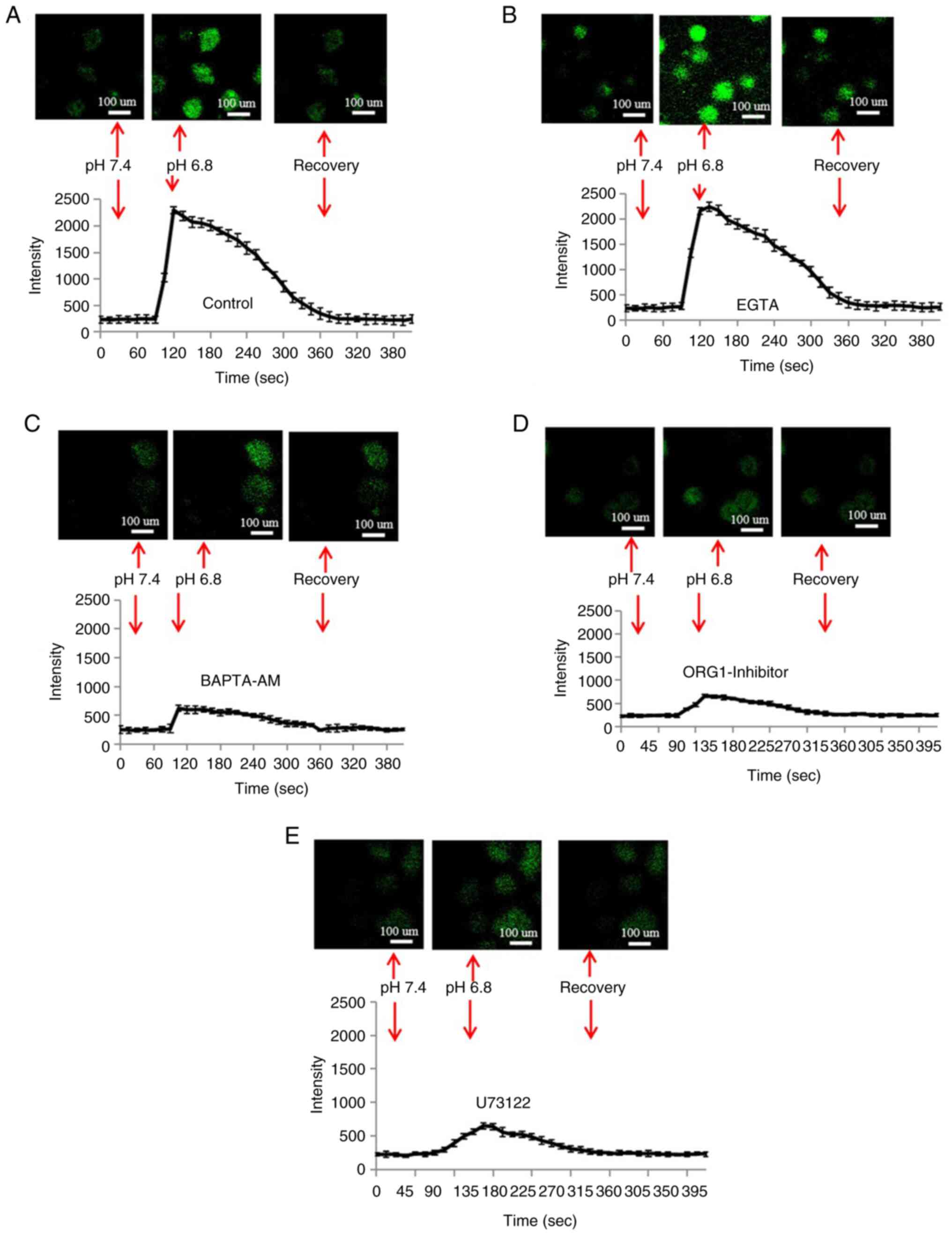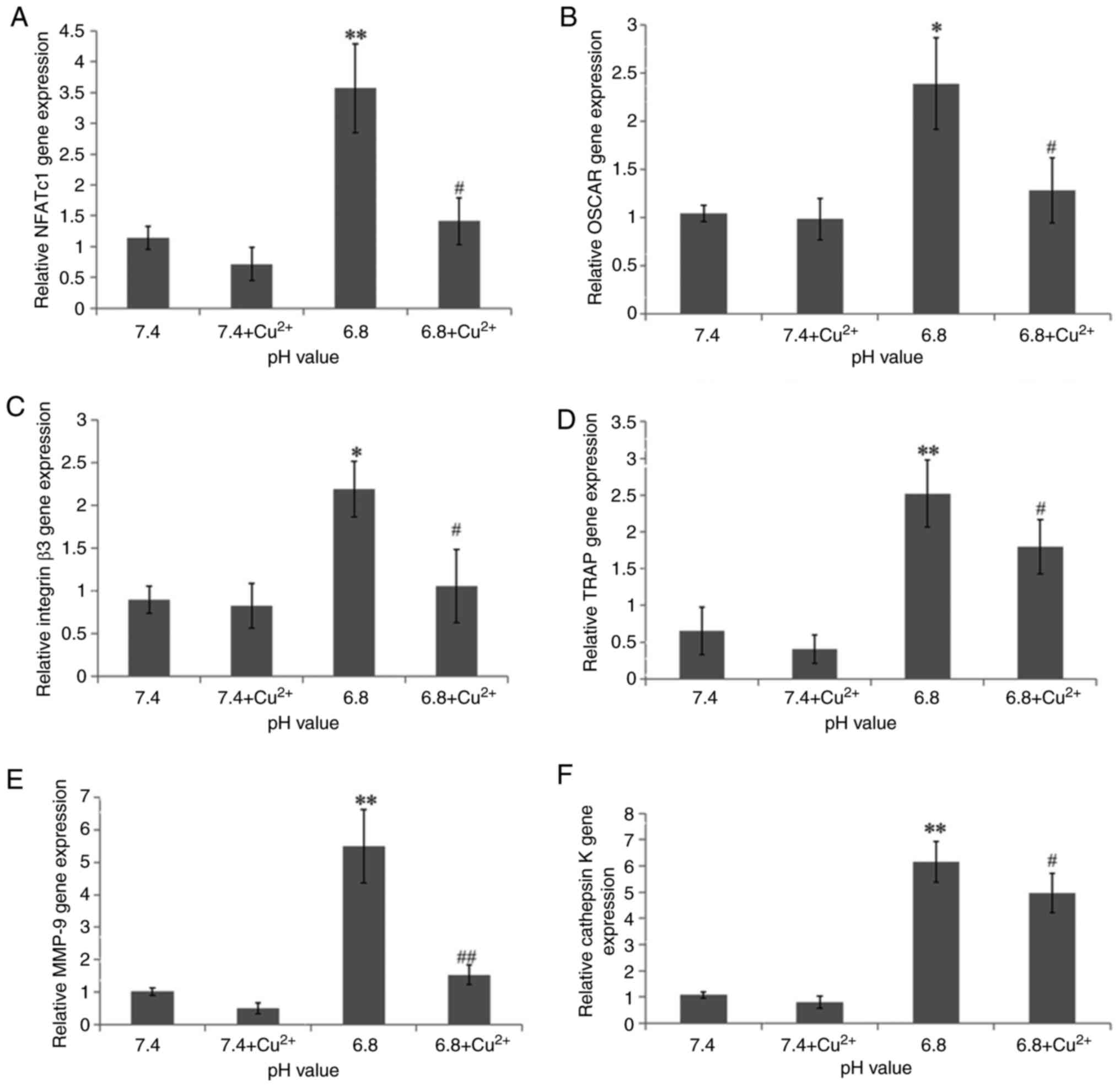|
1
|
Hanon C, Savarino J and Thomas C: Blood
lactate and acid-base balance of world-class amateur boxers after
three 3-min rounds in international competition. J Strength Cond
Res. 29:942–946. 2015.PubMed/NCBI View Article : Google Scholar
|
|
2
|
Li Y, Gao H, Zhao L and Wang J:
Osteoporosis in COPD patients: Risk factors and pulmonary
rehabilitation. Clin Respir J. 16:487–496. 2022.PubMed/NCBI View Article : Google Scholar
|
|
3
|
William Whitehouse R, Ahmad G, Kirwadi A
and Matthew Howard J: Imaging of chronic kidney disease-mineral and
bone disorder. Radiol Clin North Am. 60:547–559. 2022.PubMed/NCBI View Article : Google Scholar
|
|
4
|
Yormaz B, Cebeci H, Yılmaz F and Süerdem
M: Bone mineral density in emphysema and chronic bronchitis
phenotypes in hospitalized male chronic obstructive pulmonary
disease patients. Clin Respir J. 14:47–53. 2020.PubMed/NCBI View Article : Google Scholar
|
|
5
|
Johnston CB and Dagar M: Osteoporosis in
older adults. Med Clin North Am. 104:873–884. 2020.PubMed/NCBI View Article : Google Scholar
|
|
6
|
Kim JM, Lin C, Stavre Z, Greenblatt MB and
Shim JH: Osteoblast-osteoclast communication and bone homeostasis.
Cells. 9(2073)2020.PubMed/NCBI View Article : Google Scholar
|
|
7
|
Arnett TR: Acidosis, hypoxia and bone.
Arch Biochem Biophys. 503:103–109. 2010.PubMed/NCBI View Article : Google Scholar
|
|
8
|
Amin N, Boccardi V, Taghizadeh M and
Jafarnejad S: Probiotics and bone disorders: The role of
RANKL/RANK/OPG pathway. Aging Clin Exp Res. 32:363–371.
2020.PubMed/NCBI View Article : Google Scholar
|
|
9
|
Chun KH, Jin HC, Kang KS, Chang TS and
Hwang GS: Poncirin inhibits osteoclast differentiation and bone
loss through down-regulation of NFATc1 in vitro and in vivo. Biomol
Ther (Seoul). 28:337–343. 2020.PubMed/NCBI View Article : Google Scholar
|
|
10
|
Rohatgi N, Zou W, Collins PL, Brestoff JR,
Chen TH, Abu-Amer Y and Teitelbaum SL: ASXL1 impairs osteoclast
formation by epigenetic regulation of NFATc1. Blood Adv.
2:2467–2477. 2018.PubMed/NCBI View Article : Google Scholar
|
|
11
|
Cao B, Dai X and Wang W: Knockdown of
TRPV4 suppresses osteoclast differentiation and osteoporosis by
inhibiting autophagy through Ca2+ -calcineurin-NFATc1
pathway. J Cell Physiol. 234:6831–6841. 2019.PubMed/NCBI View Article : Google Scholar
|
|
12
|
Kadow-Romacker A, Hoffmann JE, Duda G,
Wildemann B and Schmidmaier G: Effect of mechanical stimulation on
osteoblast- and osteoclast-like cells in vitro. Cells Tissues
Organs. 190:61–68. 2009.PubMed/NCBI View Article : Google Scholar
|
|
13
|
Tong X, Ganta RR and Liu Z: AMP-activated
protein kinase (AMPK) regulates autophagy, inflammation and
immunity and contributes to osteoclast differentiation and
functionabs. Biol Cell. 112:251–264. 2020.PubMed/NCBI View Article : Google Scholar
|
|
14
|
Gan Z, Huang J, Xu M, Yuan X, Shang X,
Chen X and Chen K: Micheliolide prevents estrogen
deficiency-induced bone loss via inhibiting osteoclast bone
resorption. Aging (Albany NY). 15:10732–10745. 2023.PubMed/NCBI View Article : Google Scholar
|
|
15
|
Wei Y and Sun Y: Aging of the bone. Adv
Exp Med Biol. 1086:189–197. 2018.PubMed/NCBI View Article : Google Scholar
|
|
16
|
Goldhaber P and Rabadjija L: H+
stimulation of cell-mediated bone resorption in tissue culture. Am
J Physiol. 253:E90–E98. 1987.PubMed/NCBI View Article : Google Scholar
|
|
17
|
Meghji S, Morrison MS, Henderson B and
Arnett TR: pH dependence of bone resorption: Mouse calvarial
osteoclasts are activated by acidosis. Am J Physiol Endocrinol
Metab. 280:E112–E119. 2001.PubMed/NCBI View Article : Google Scholar
|
|
18
|
Ahn H, Kim JM, Lee K, Kim H and Jeong D:
Extracellular acidosis accelerates bone resorption by enhancing
osteoclast survival, adhesion, and migration. Biochem Biophys Res
Commun. 418:144–148. 2012.PubMed/NCBI View Article : Google Scholar
|
|
19
|
Park JW, Yoon HJ, Kang WY, Cho S, Seong
SJ, Lee HW, Yoon YR and Kim HJ: G protein-coupled receptor 84
controls osteoclastogenesis through inhibition of NF-κB and MAPK
signaling pathways. J Cell Physiol. 233:1481–1489. 2018.PubMed/NCBI View Article : Google Scholar
|
|
20
|
Kanaya K, Iba K, Abe Y, Dohke T, Okazaki
S, Matsumura T and Yamashita T: Acid-sensing ion channel 3 or
P2X2/3 is involved in the pain-like behavior under a high bone
turnover state in ovariectomized mice. J Orthop Res. 34:566–573.
2016.PubMed/NCBI View Article : Google Scholar
|
|
21
|
Ludwig MG, Vanek M, Guerini D, Gasser JA,
Jones CE, Junker U, Hofstetter H, Wolf RM and Seuwen K:
Proton-sensing G-protein-coupled receptors. Nature. 425:93–98.
2003.PubMed/NCBI View Article : Google Scholar
|
|
22
|
Wiley SZ, Sriram K, Salmerón C and Insel
PA: GPR68: An emerging drug target in cancer. Int J Mol Sci.
20(559)2019.PubMed/NCBI View Article : Google Scholar
|
|
23
|
Hutter S, van Haaften WT, Hünerwadel A,
Baebler K, Herfarth N, Raselli T, Mamie C, Misselwitz B, Rogler G,
Weder B, et al: Intestinal activation of pH-sensing receptor OGR1
[GPR68] contributes to fibrogenesis. J Crohns Colitis.
12:1348–1358. 2018.PubMed/NCBI View Article : Google Scholar
|
|
24
|
Mogi C, Nakakura T and Okajima F: Role of
extracellular proton-sensing OGR1 in regulation of insulin
secretion and pancreatic β-cell functions. Endocr J. 61:101–110.
2014.PubMed/NCBI View Article : Google Scholar
|
|
25
|
Ding S, Xu J, Zhang Q, Chen F, Zhang J,
Gui K, Xiong M, Li B, Ruan Z and Zhao M: OGR1 mediates the
inhibitory effects of acidic environment on proliferation and
angiogenesis of endothelial progenitor cells. Cell Biol Int.
43:1307–1316. 2019.PubMed/NCBI View Article : Google Scholar
|
|
26
|
Yuan FL, Wang HR, Zhao MD, Yuan W, Cao L,
Duan PG, Jiang YQ, Li XL and Dong J: Ovarian cancer G
protein-coupled receptor 1 is involved in acid-induced apoptosis of
endplate chondrocytes in intervertebral discs. J Bone Miner Res.
29:67–77. 2014.PubMed/NCBI View Article : Google Scholar
|
|
27
|
Pereverzev A, Komarova SV, Korcok J,
Armstrong S, Tremblay GB, Dixon SJ and Sims SM: Extracellular
acidification enhances osteoclast survival through an
NFAT-independent, protein kinase C-dependent pathway. Bone.
42:150–161. 2008.PubMed/NCBI View Article : Google Scholar
|
|
28
|
Livak KJ and Schmittgen TD: Analysis of
relative gene expression data using real-time quantitative PCR and
the 2(-Delta Delta C(T)) method. Methods. 25:402–408.
2001.PubMed/NCBI View Article : Google Scholar
|
|
29
|
Negishi-Koga T and Takayanagi H:
Ca2+-NFATc1 signaling is an essential axis of osteoclast
differentiation. Immunol Rev. 231:241–256. 2009.PubMed/NCBI View Article : Google Scholar
|
|
30
|
Soysa NS and Alles N: Osteoclast function
and bone-resorbing activity: An overview. Biochem Biophys Res
Commun. 476:115–120. 2016.PubMed/NCBI View Article : Google Scholar
|
|
31
|
Arnett TR and Spowage M: Modulation of the
resorptive activity of rat osteoclasts by small changes in
extracellular pH near the physiological range. Bone. 18:277–279.
1996.PubMed/NCBI View Article : Google Scholar
|
|
32
|
Quélo I and Jurdic P: Differential
regulation of the carbonic anhydrase II gene expression by hormonal
nuclear receptors in monocytic cells: Identification of the
retinoic acid response element. Biochem Biophys Res Commun.
271:481–491. 2000.PubMed/NCBI View Article : Google Scholar
|
|
33
|
Matsumoto N, Daido S, Sun-Wada GH, Wada Y,
Futai M and Nakanishi-Matsui M: Diversity of proton pumps in
osteoclasts: V-ATPase with a3 and d2 isoforms is a major form in
osteoclasts. Biochim Biophys Acta. 1837:744–749. 2014.PubMed/NCBI View Article : Google Scholar
|
|
34
|
Wu X, Ren G, Zhou R, Ge J and Chen FH: The
role of Ca2+ in acid-sensing ion channel 1a-mediated
chondrocyte pyroptosis in rat adjuvant arthritis. Lab Invest.
99:499–513. 2019.PubMed/NCBI View Article : Google Scholar
|
|
35
|
Abe-Ohya R, Ishikawa T, Shiozawa H, Suda K
and Nara F: Identification of metals from osteoblastic ST-2 cell
supernatants as novel OGR1 agonists. J Recept Signal Transduct Res.
35:485–492. 2015.PubMed/NCBI View Article : Google Scholar
|
|
36
|
Wei X, Li H, Zhang Y, Li C, Li K, Ai K and
Yang J: : Ca2+-calcineurin axis-controlled NFAT nuclear
translocation is crucial for optimal T cell immunity in an early
vertebrate. J Immunol. 204:569–585. 2020.PubMed/NCBI View Article : Google Scholar
|
|
37
|
Zhang J, Xu H, Han Z, Chen P, Yu Q, Lei Y,
Li Z, Zhao M and Tian J: Pulsed electromagnetic field inhibits
RANKL-dependent osteoclastic differentiation in RAW264.7 cells
through the Ca2+-calcineurin-NFATc1 signaling pathway.
Biochem Biophys Res Commun. 482:289–295. 2017.PubMed/NCBI View Article : Google Scholar
|
|
38
|
Rao A, Luo C and Hogan PG: Transcription
factors of the NFAT family: Regulation and function. Annu Rev
Immunol. 15:707–747. 1997.PubMed/NCBI View Article : Google Scholar
|
|
39
|
Takayanagi H, Kim S, Koga T, Nishina H,
Isshiki M, Yoshida H, Saiura A, Isobe M, Yokochi T, Inoue JI, et
al: Induction and activation of the transcription factor NFATc1
(NFAT2) integrate RANKL signaling in terminal differentiation of
osteoclasts. Dev Cell. 3:889–901. 2002.PubMed/NCBI View Article : Google Scholar
|
|
40
|
Liang S, Zhang H, Du Y, Dou C, Liu S,
Zhang L, Chen Y, Li R, Ma J, Li Z, et al: RANK deficiency
ameliorates podocyte injury by suppressing
calcium/calcineurin/NFATc1 signaling. Kidney Blood Press Res.
43:1149–1159. 2018.PubMed/NCBI View Article : Google Scholar
|
|
41
|
Kusumaningrum N, Lee DH, Yoon HS, Park CH
and Chung JH: Ultraviolet light-induced gasdermin C expression is
mediated via TRPV1/calcium/calcineurin/NFATc1 signaling. Int J Mol
Med. 42:2859–2866. 2018.PubMed/NCBI View Article : Google Scholar
|
|
42
|
Asagiri M, Sato K, Usami T, Ochi S,
Nishina H, Yoshida H, Morita I, Wagner EF, Mak TW, Serfling E and
Takayanagi H: Autoamplification of NFATc1 expression determines its
essential role in bone homeostasis. J Exp Med. 202:1261–1269.
2005.PubMed/NCBI View Article : Google Scholar
|
|
43
|
Nishikawa K, Iwamoto Y and Ishii M:
Development of an in vitro culture method for stepwise
differentiation of mouse embryonic stem cells and induced
pluripotent stem cells into mature osteoclasts. J Bone Miner Metab.
32:331–336. 2014.PubMed/NCBI View Article : Google Scholar
|
|
44
|
Zeng XZ, He LG, Wang S, Wang K, Zhang YY,
Tao L, Li XJ and Liu SW: Aconine inhibits RANKL-induced osteoclast
differentiation in RAW264.7 cells by suppressing NF-κB and NFATc1
activation and DC-STAMP expression. Acta Pharmacol Sin. 37:255–263.
2016.PubMed/NCBI View Article : Google Scholar
|
|
45
|
Xiang B, Liu Y, Zhao W, Zhao H and Yu H:
Extracellular calcium regulates the adhesion and migration of
osteoclasts via integrin αv β 3/Rho
A/cytoskeleton signaling. Cell Biol Int. 43:1125–1136.
2019.PubMed/NCBI View Article : Google Scholar
|
|
46
|
Barinda AJ, Ikeda K, Hirata KI and Emoto
N: Macrophages highly express carbonic anhydrase 2 and play a
significant role in demineralization of the ectopic calcification.
Kobe J Med Sci. 63:E45–E50. 2017.PubMed/NCBI
|
|
47
|
Castillo LM, Guerrero CA and Acosta O:
Expression of typical osteoclast markers by PBMCs after PEG-induced
fusion as a model for studying osteoclast differentiation. J Mol
Histol. 48:169–185. 2017.PubMed/NCBI View Article : Google Scholar
|
|
48
|
Kim JH, Kim M, Jung HS and Sohn Y:
Leonurus sibiricus L. ethanol extract promotes osteoblast
differentiation and inhibits osteoclast formation. Int J Mol Med.
44:913–926. 2019.PubMed/NCBI View Article : Google Scholar
|
|
49
|
Han SY and Kim YK: Berberine suppresses
RANKL-induced osteoclast differentiation by inhibiting c-Fos and
NFATc1 expression. Am J Chin Med. 47:439–455. 2019.PubMed/NCBI View Article : Google Scholar
|
|
50
|
Li F, Sun X, Ma J, Ma X, Zhao B, Zhang Y,
Tian P, Li Y and Han Z: Naringin prevents ovariectomy-induced
osteoporosis and promotes osteoclasts apoptosis through the
mitochondria-mediated apoptosis pathway. Biochem Biophys Res
Commun. 452:629–635. 2014.PubMed/NCBI View Article : Google Scholar
|















